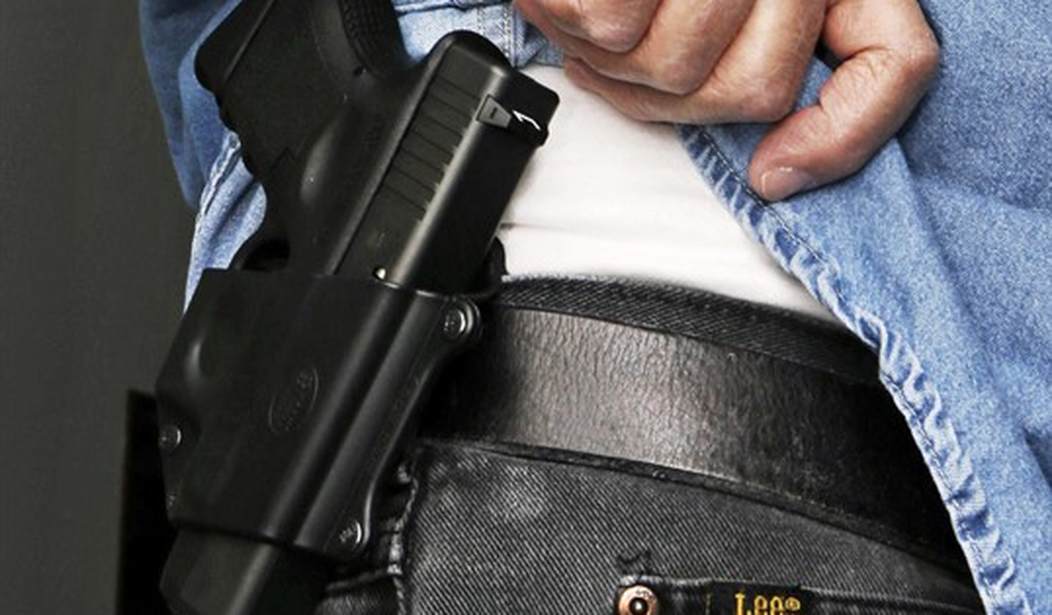Even if you’re licensed to carry a concealed firearm in Connecticut, doing so in a state park could lead to criminal charges thanks to the “gun-free zone” status of all state-owned parks and forests imposed by the Connecticut Department of Energy and Environmental Protection. While the agency’s rules allow for some firearms to be brought onto park property during hunting season, carrying for self-defense is a no-go at all times; a provision challenged earlier this year by Connecticut resident David Nastri.
On Tuesday, Nastri got his first day in court as U.S. District Judge Janet Bond Arterton heard oral arguments on his request for an injunction against enforcement of the prohibition while the case makes its way through the legal system. Ahead of her decision, local TV station WTNH headed out to a nearby state park to ask folks what they thought about the ban. Given the anti-gun tilt of the Connecticut legislature and Gov. Ned Lamont, I honestly expected that the news station would find most park goers in support of the ban, but I was pleasantly surprised to see that wasn’t the case.
“More guns in public parks would be the last thing that the state and the country needs, especially with everything that’s happened,” said Dave Donohue, a father walking the trail with his 3-year-old son.
Danielle Musco, of East Haven, said she doesn’t own guns but supports the idea of protecting yourself.
“[If] someone decides to come here with ill intent, it’s the good people with good intent that’s going to stop that situation,” Musco said. “It’s not the cops that are miles down the road.”
… Daisy Rodriguez, of Hamden, said safety is important against people and wildlife, so she wanted to bring her gun on Monday’s hike with friends.
“A lot of things have been going on, so I don’t know, I just would’ve. I wanted to bring mine,” Rodriguez said.
As Nastri’s attorney Cameron Atkinson pointed out in his initial complaint, there’s simply no justification for Connecticut’s policy; not one that would stand up to the slightest bit of scrutiny under the test, history, and tradition test laid out by the Supreme Court in Bruen.
Heller itself only cited two historical examples of “sensitive places:” “schools and government buildings.”
Bruen built on the specificity of Heller’s examples, adding “legislative assemblies, polling places, and courthouses.”
Neither these specific examples nor Heller’s and Bruen’s broader categories are remotely analogous to Conn. Agencies Regs. § 23-4-1(c). Our nation’s history is also completely devoid of any suitable analogue to Conn. Agencies Regs. § 23- 4-1(c).
Conn. Agencies Regs. § 23-4-1(c) go even further than the test proposed by New York in Bruen, which the Supreme Court rejected as defining the category of “sensitive places” “far too broadly.” New York proposed to define “sensitive places” as “where the government may lawfully disarm law-abiding citizens include all ‘places where people typically congregate and where law-enforcement and other public-safety professionals are presumptively available.’”
Bruen rejected this test on the basis that it “would eviscerate the general right to publicly carry arms for self-defense….”
Conn. Agencies Regs. § 23-4-1(c)’s prohibition fails even this test. Lawenforcement and other public-safety professionals are rarely present or readily available in state parks or forests. Law enforcement and other public-safety professionals are rarely present or readily available in state parks or forests. The undeveloped nature of state parks and forests means that vehicular access is extremely limited. In cases readily imaginable, law enforcement would need to traverse miles on foot to reach a person who calls for help, assuming that their cellphones would have sufficient reception to request it. In other words, response times could exceed half an hour or more.
What’s more, as Atkinson notes, the state agency that oversees the state parks and forests does allow for firearms to be brought into these “sensitive places” for hunting and even recreational shooting at the one state park with a range located within its boundaries. But if a park-goer wants to have a firearm on her person to protect against an assault while hiking on a trail, she could be subject to criminal penalties.
This seems like a no-brainer, but we’ll have to see what Arterton has to say. If the Clinton-appointee abides by the Supreme Court’s guidance in Bruen, it should be an easy call for her to side with Nastri and grant the injunction based on the harm done to law-abiding residents. If the 79-year-old judge decides to engage in some anti-gun activism from the bench, however, all bets are off. And given the Second Circuit Court of Appeals historical hostility towards the Second Amendment (including its own ruling in Bruen upholding New York’s “may issue” statute, even if Arterton does grant Nastri’s request that move could be quickly undone by the appellate courts. Nastri’s challenge to the “gun-free zone” that isn’t really gun-free at all is on solid legal footing, but that doesn’t guarantee that either the trial or appellate courts will do the right thing.









Join the conversation as a VIP Member